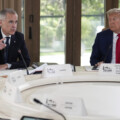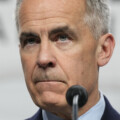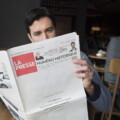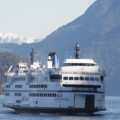It’s no coincidence that less than a week after the Conservative Party announced the rules of its upcoming leadership contest, media reports are now warning of a deluge of candidates set to join the race.
Former Quebec premier Jean Charest, Brampton Mayor Patrick Brown and Conservative MP Leslyn Lewis will soon join Ottawa-area MP Pierre Poilievre in the battle to lead the party, according to the CBC.
That makes sense. The number and variety of candidates that run in a party leadership contest are, to a great extent, a product of the permissibility of the rules that structure the race. Who is allowed to run and who is disqualified from doing so?
In practice, those rules must strike a balance. On one hand, openness and accessibility is a virtue. In what is supposed to be a democratic race, candidates from a wide variety of backgrounds should be able to put their names forward and allow party members to choose from among them. If a party disqualifies a broad range of potential candidates, members will rightly see the party as heavy-handed. Why should faceless party brass decide who members are able to choose from?
But, on the other hand, parties have a vested interest in ensuring that not every nutcase from sea to shining sea is jumping into the race and stealing the spotlight from serious candidates. Leadership races are not simple administrative matters, like hiring a new assistant manager of human resources. Rather, these races can be defining moments in the history of both the party and the country. They can be remarkable public spectacles, and parties hope to generate interest and excitement from these races. Leadership elections are also opportunities for parties to raise money and, more importantly, to expand the membership as new candidates put themselves forward for the leadership. This all is why it’s important to manage who does and does not enter the race.
There are several tools to do so. Parties may impose entrance requirements—typically a deposit or a commitment to sell a certain number of party memberships, or a requirement to get a certain number of signatures from party members—to filter out unserious candidates or those who are only looking to boost their profiles. And the timing of the race can play a major role in determining which candidate will be competitive.
So a lot of people were watching when the Conservative Party’s Leadership Election Organizing Committee (LEOC), chaired by Ian Brodie, released the rules for its upcoming leadership election last week. LEOC will require candidates to pay an entry fee of $200,000 to participate, plus a $100,000 refundable deposit. This is a sizeable chunk of change but is not unreasonable, and in fact is unchanged from the last race in 2020.
But what everyone was really waiting for was news of the timing of the race: would the election take place quickly, ensuring the party would have an elected leader in place as soon as possible? Or would LEOC opt for a more leisurely time frame?
A quick race was rightly seen to help party establishment candidates with an existing base of support and wide name recognition. A member of the party caucus, for example, benefits from such a race. Conversely, a more drawn-out race would provide an opportunity for lesser-known and outsider candidates to make a name for themselves with the party membership before the vote. This latter scenario would also provide an opportunity for outsiders to sell memberships, expanding the base of the party.
A quick race was seen to help MP Pierre Poilievre, who is already well-known and well-liked by the party membership in part due to his effective performances in question period holding the Liberal government accountable. Poilievre is also seen to be the most prepared organizationally, and therefore best able to exploit a short timeframe. His announcement was quickly followed by pledges of support from fellow CPC caucus members, a strategy widely (and probably correctly) interpreted as a move to intimidate and dissuade other potential quality leadership contenders from throwing their hats in the ring.
In contrast, former Quebec premier Jean Charest is to a great extent an outsider who will need to convince existing members and recruit new members from regions where the party has been weak in recent elections. The more time he has to do so, the better. Other candidates like former contender Leslyn Lewis will also benefit from time to mobilize their own bases of support both within and outside the party.
Some of Poilievre’s supporters, in advance of LEOC’s decision, seemed to confirm these arguments by calling for an early race. They argued that the party could not afford a leisurely race in a minority Parliament when prime minister Trudeau can, at any time, pull the plug on his government and go into an election campaign. Charest, for his part, acknowledged the importance of the rules by saying that his decision to run would depend on what they looked like.
In the end, Poilievre’s supporters probably did him no favours by openly campaigning for a quick race. These efforts, which had the inadvertent effect of politicizing the process, put LEOC in a difficult position and may well have backfired.
We have some recent experience with these issues here in Manitoba, where the provincial Progressive Conservative Party recently selected a new leader and premier. From the outset, an establishment candidate, Health Minister Heather Stefanson, was seen as the front-runner. Like Poilievre, she marshalled significant support from the party caucus at her announcement: almost the entire caucus—including one MLA who wasn’t allowed to express a preference but did so anyway!—supported her candidacy.
The party then announced the rules for the race, which included relatively high thresholds for candidates and, most importantly, a quick race: candidates had only a little over a month to sell memberships. Further, the quick race overlapped with the federal election campaign in 2019, making it impossible for MPs like Manitoba’s Candice Bergen to even consider a run.
The decision for a quick race with high thresholds was widely seen in Manitoba as the party brass placing its thumb on the scale for Stefanson. The rules did not dissuade the tenacious former MP Shelly Glover from challenging Stefanson, but the time she had to sell memberships and organize was limited. To a large extent, the rules of the race and perceptions of unfairness poisoned the race from the outset and likely indirectly contributed to Glover’s lawsuit challenging Stefanson’s win that would drag on for months after the result was announced.
Ultimately, as we all now know, LEOC settled on a relatively long timeframe for the race: June 3rd is the deadline for potential candidates to sign up new members, and the leader will be selected by September 10th. This was the outcome Charest was hoping for and, having gotten it, the announcement of his candidacy is now imminent.
I think LEOC made the right decision. Members of the committee showed some spine in the face of what appeared to be a concerted effort among some MPs to apply pressure for a quick outcome. Party members should have confidence that the committee will act in an impartial manner throughout the race.
More importantly, there are good reasons to open the race up to a multitude of viewpoints: to give candidates enough time to present themselves to members and to give members enough time to assess the candidates fully. A longer race means more media attention and more interest, and greater opportunities for the party to expand its appeal.
But more importantly: Trudeau’s government continues to show its age and the Liberal Party will eventually, as it always does, fall from power in a spectacular fashion. With each passing year, the likelihood that whoever is the Conservative leader will become prime minister increases, and so the results of this race will be particularly important for the party. That’s worth a few extra months to get it right.
Recommended for You

Need to Know: Mark Carney’s digital services tax disaster

Theo Argitis: Carney is dismantling Trudeau’s tax legacy. How will he pay for his plan?

‘They’re voting with their eyeballs’: Sean Speer on the revealed preferences of Canadian news consumers

Kirk LaPointe: B.C.’s ferry fiasco is a perfectly Canadian controversy



